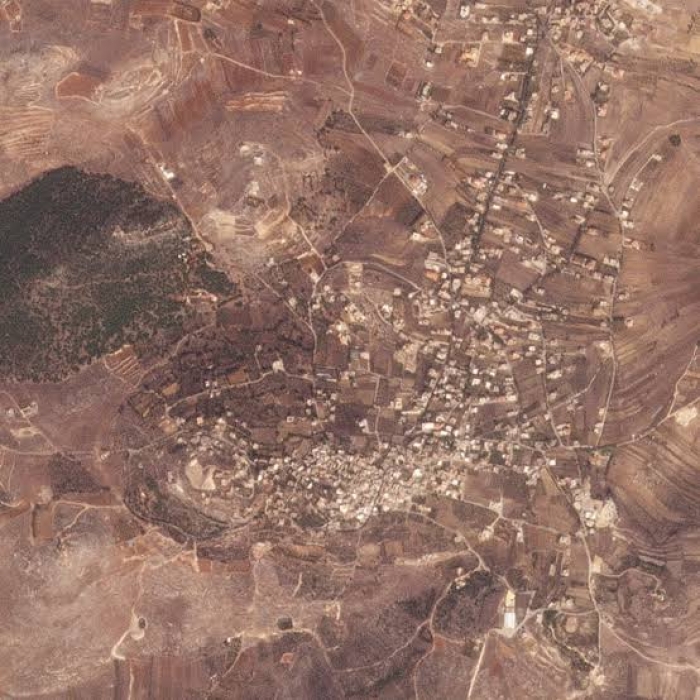Israeli campaign leaves Lebanese border towns in ruins, satellite images show
Israel's military campaign in southern Lebanon has caused vast destruction in more than a dozen border towns and villages, reducing many of them to clusters of grey craters, according to satellite imagery provided to Reuters by Planet Labs Inc.
Many of the towns, emptied of their residents by the bombing, had been inhabited for at least two centuries. The imagery reviewed includes towns between Kfarkela in southeastern Lebanon, south past Meiss al-Jabal, and then west past a base used by U.N. peacekeepers to the small village of Labbouneh.
"There are beautiful old homes, hundreds of years old. Thousands of artillery shells have hit the town, hundreds of air strikes," said Abdulmonem Choukeir, mayor of Meiss al-Jabal, one of the villages hit by Israeli attacks.
"Who knows what will still be standing at the end?"
Reuters compared satellite images taken in October 2023 to those taken in September and October 2024. Many of the villages with striking visible damage over the course of the last month sit atop hills overlooking Israel.
After nearly a year of exchanging fire across the border, Israel intensified its strikes on southern Lebanon and beyond over the last month. Israeli troops have made ground incursions all along the mountainous frontier with Lebanon, engaging in heavy clashes with Hezbollah fighters inside some towns.
Lebanon's disaster risk management unit, which tracks both victims and attacks on specific towns, said the 14 towns reviewed by Reuters had been subject to a total of 3,809 attacks by Israel over the last year.
Israel's military did not immediately respond to Reuters questions about the scale of destruction. Israel's military spokesman Daniel Hagari said on Oct. 24 that Israel has struck more than 3,200 targets in south Lebanon.
The military says it is attacking towns in southern Lebanon because Hezbollah has turned "civilian villages into fortified combat zones," hiding weapons, explosives and vehicles there. Hezbollah denies using civilian infrastructure to launch attacks or store weapons, and residents of the towns deny the assertion.
A person familiar with Israel's military operations in Lebanon told Reuters that troops were systematically attacking towns with strategic overlook points, including Mhaibib.
The person said that Israel had "learned lessons" after its last war with Hezbollah in 2006, including incidents in which troops making ground incursions into the valleys of southern Lebanon were attacked by Hezbollah fighters on hilltops.
"That is why they are targeting these villages so heavily - so they can move more freely," the person said.
The most recent images of Kfarkela showed a string of white splotches along a main road leading into a town. Imagery taken last year showed the same road lined with houses and green vegetation, indicating the houses had been pulverized.
Further south, Meiss al-Jabal, a town 700 meters (yards) away from the U.N.-demarcated Blue Line separating Israeli and Lebanese territory, suffered significant destruction to an entire block near the town centre.
The area, measuring approximately 150 meters by 400 metres, appeared as a swatch of sandy brown, signalling the buildings there had been entirely flattened. Images from the same month in 2023 showed a densely packed neighbourhood of homes.
'ANY SIGN OF LIFE'
At least 1.2 million people have been displaced by Israel's strikes and more than 2,600 have been killed over the last year - a vast majority in the last month, Lebanon's government says.
Residents of the border villages have not been able to reach their hometowns in months. "After war came to Meiss al-Jabal, after the residents left, we no longer know anything about the state of the village," Meiss al-Jabal's mayor said.
Imagery of the nearby village of Mhaibib depicted similar levels of destruction. Mhaibib is one of several villages - alongside Kfarkela, Aitaroun, Odaisseh, and Ramyeh - featured in footage shared on social media showing simultaneous explosions of several structures at once, indicating they had been laden with explosives.
Israel's military spokesman said on Oct. 24 that a command centre for Hezbollah's elite Radwan unit lay under Mhaibib, and that Israeli troops had "neutralised the main tunnel network" used by the group, but did not give details.
Hagari has said that Israel's goal is to "push Hezbollah away from the border, dismantle its capabilities, and eliminate the threat to northern residents" of Israel.
"This is a plan you take off the shelf," said Jon Alterman, senior vice president at the Center for Strategic and International Studies (CSIS) in Washington. "Militaries plan, and they're executing the plan."
Seth Jones, another senior vice president at CSIS, had earlier told Reuters that Hezbollah used frontline villages to fire its shorter-range rockets into Israel.
Lubnan Baalbaki, the conductor of Lebanon's philharmonic orchestra and son of late Lebanese artist Abdel-Hamid Baalbaki, said his family had been purchasing satellite imagery of their hometown of Odaisseh to check if the family house still stood.
The house had been transformed by Abdel-Hamid into a cultural centre, full of his art works, original sketches and more than 1,000 books in an all-wood library. Abdel-Hamid passed away in 2013 and was buried behind the house with his late wife.
"We're a family of artists, my father is well-known, and our home was a known cultural home. We were trying to reassure ourselves with that thought," Baalbaki, the son, told Reuters.
Until late October, the house still stood. But at the weekend Baalbaki saw a video circulating of several homes in Odaisseh, including his family's, exploding.
The family is not affiliated to Hezbollah and Baalbaki denied that any weapons or military equipment were stored there.
"If you have such high-level intelligence that you can target specific military figures, then you know what's in that house," Baalbaki said. "It was an art house. We are all artists. The aim is to erase any sign of life."
Reuters

